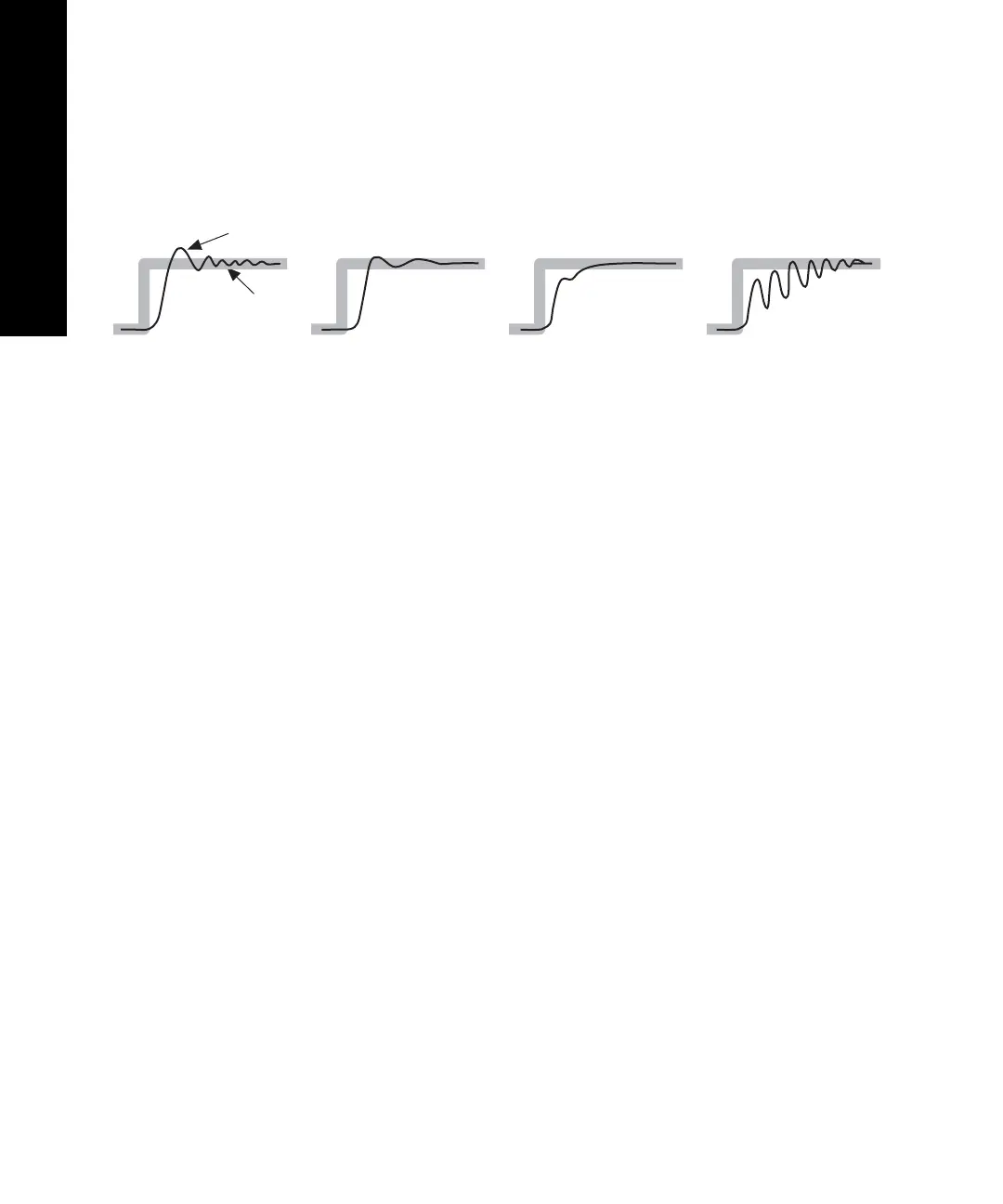Model 493.02 Controller Service
About Tuning
Tuning
202
Derivative gain (D) Derivative gain is used with dynamic test programs. It introduces a
“derivative of the feedback signal.” This means it anticipates the rate of
change of the feedback and slows the system response at high rates of
change.
Derivative gain:
• Reduces ringing
• Provides stability and reduces noise at higher proportional gain
settings
• Tends to amplify noise from sensors
• Tends to decrease system response when set too high
Keep in mind:
• Too much derivative gain can create instability at high
frequencies, and too much proportional gain may cause a ringing
or screeching sound.
• Too little derivative gain can make a rumbling sound. The correct
amount of derivative gain results in the system running quietly.
Note Series 256 and 257 Servovalves may require derivative gain applied
to both the inner control loop and outer control loop.
Note Excessive negative (–) D Gain can cause your system to become
unstable.
Too Much RateOptimum Rate
Excessive Rate
Overshoot
Ringing
Needs Rate
